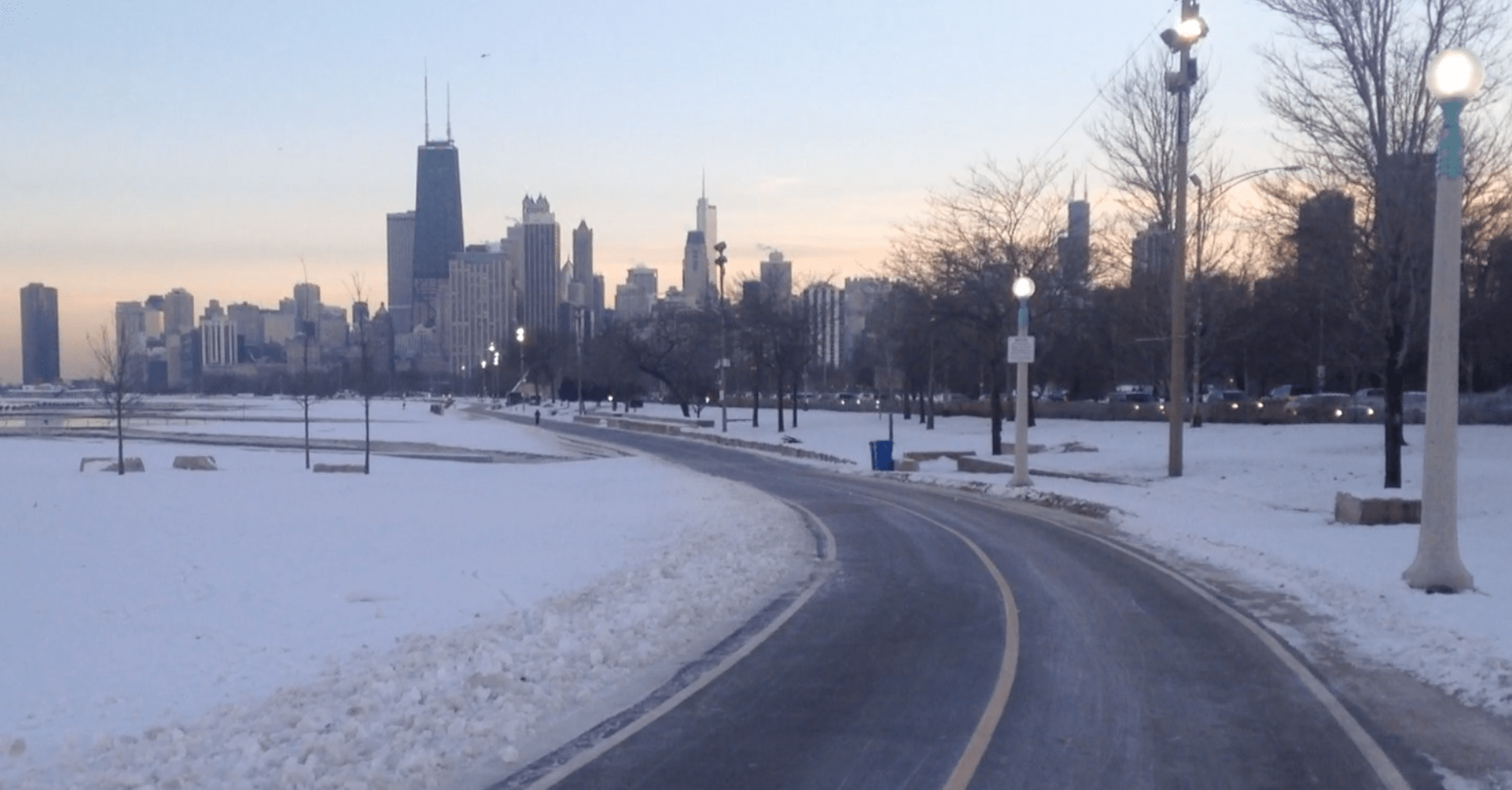First off, a tip of the helmet to the Chicago Park District for doing an excellent job with plowing and salting the North Lakefront Trail following last weekend's four-inch snowfall. When I've ridden it this week, in most places the path has been about as easy to ride on as in July -- easier actually because it's not clogged with tons of pedestrians and cyclists (which itself is a good problem to have). Take a virtual ride on the trail with me in yesterday's 10-degree weather here.
I haven't made it to the south lakefront this week, but I've been seeing reports that it's in pretty good shape as well. The park district's diligence with clearing the Lakefront Trail makes a lot of sense, because it's important for transportation as well as recreation. Even in cold weather, many Chicagoans rely on it as a safe, car-free bike commuting route.
The same is true with the Near Northwest Side's Bloomingdale Trail, aka The 606, which was partly funded by federal Congestion Mitigation and Air Quality funds because it was intended to serve as a transportation corridor, not just a place to catch some rays or get a workout. 21 schools are located within a half mile of the Bloomingdale, so many families use it to walk or bike to school, even during the winter.
However, folks near The 606 have reported that, almost a week after the snow ended, the trail still hasn't been plowed, and it's still basically impassible for bikes. Feet and motor vehicle tires (which indicate that there would be no problem getting a plow up on the elevated trail) have mashed down the unplowed snow, and it has frozen into a treacherous tundra, they say.
"The conditions are terrible for anything besides falling down," says Ira Cox, who often commutes on the trail with his two young children. Meanwhile, Wabansia and Cortland, the nearby parallel surface streets, are also in bad shape, so people on bikes are pretty much stuck using busy Armitage Avenue, or downright dangerous North Avenue, as alternatives, according to Cox.
"With more snow predicted this weekend we won’t be clearing [The 606]," a spokesperson from the park district replied when I asked about plowing plans yesterday on Twitter. "We encourage trail users to use The 606 for winter sport activities, such as snowshoeing & cross country skiing." They encouraged residents to follow @The606Chicago for updates and share photos the park district with the hashtag .
The thing is, that response doesn't really line up with the policy that was posted on the official website for The 606 yesterday:
The Chicago Park District will remove snow and keep the center of the trail clear in all but the heaviest snowfalls. [Emphasis added.] We can't clear the full width in order to protect rubber running surfaces. Please keep in mind winter sports (snowshoeing, cross country skiing) are only allowed when part of official programming. That'll help keep the trail open and safe at its slimmed down winter width. Please steer clear of snow removal crews.
Four inches of the white stuff doesn't seem to qualify as one of "the heaviest snowfalls" of the winter. While I'm personally stoked to go cross-country skiing on the unplowed sections on the Bloomingdale, it seems like it should be easy for the park district to have an employee do a single pass with a snowplow in the middle of the trail shortly after a storm. It certainly seems like it would be cheaper to do this than to settle any legitimate personal injury lawsuits that may ensue after someone wipes out on the icy unplowed trail.
Update 12/16/16 3:45 p.m. After my Twitter exchange with the park district yesterday, the text on The 606 website was edited:
The Chicago Park District will remove snow and keep the center of the trail clear when there is a minor snowfall. When the path is being cleared, please be advised, the full width of the trail cannot be cleared to protect rubber running surfaces on the edges. In order to protect the trail and plants, only a brush can be used to remove snow and a solution called CMA in place of salt to stop ice from forming. Please steer clear of snow removal crews.
In the event of a significant snowfall (ranging from 3-6 inches and dependent on additional factors such as wind and snow wetness), the Chicago Park District will not remove snow in efforts to promote winter activities. Please keep in mind winter sports (snowshoeing, cross country skiing) are only allowed and encouraged on the trail when snow exceeds 3 inches.
It's certainly important not to damage the Bloomingdale Trail surface or plants. But it seems that if it's possible to plow the asphalt Lakefront Trail on a regular basis, the park district should be able to figure out a safe way to clear heavier snow on the concrete Bloomingdale as well.
This post is made possible by a grant from the Illinois Bicycle Lawyers at Keating Law Offices, P.C., a Chicago, Illinois law firm committed to representing pedestrians and cyclists. The content is Streetsblog Chicago's own, and Keating Law Offices neither endorses the content nor exercises any editorial control.




